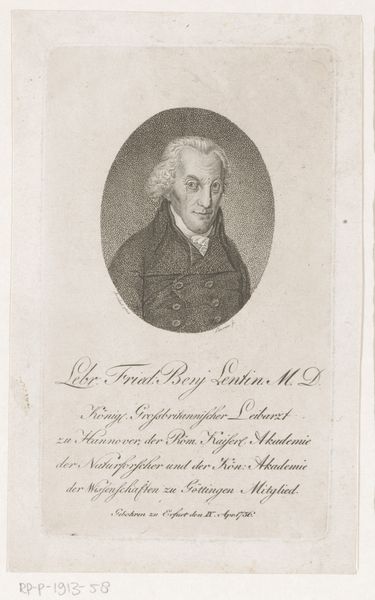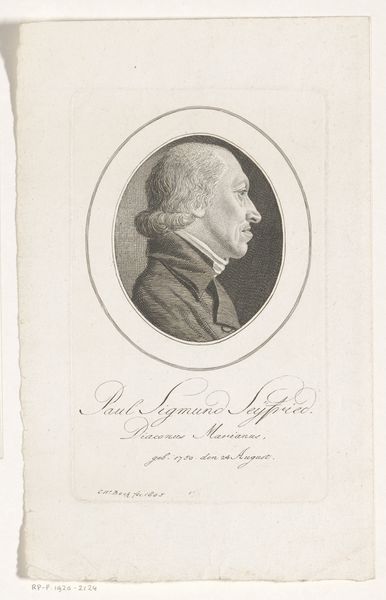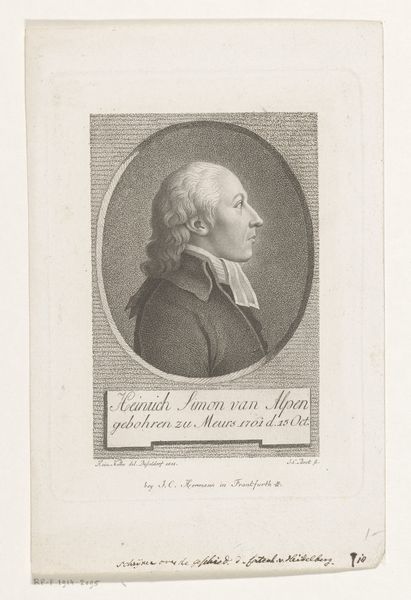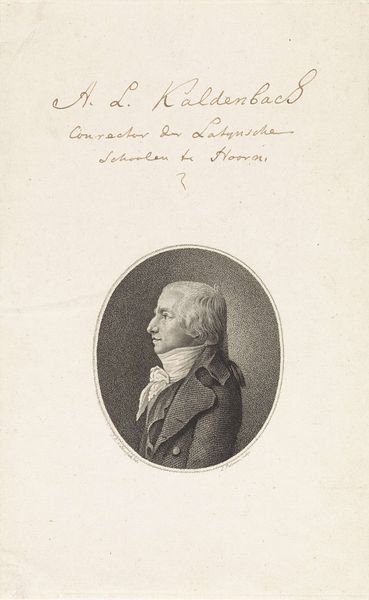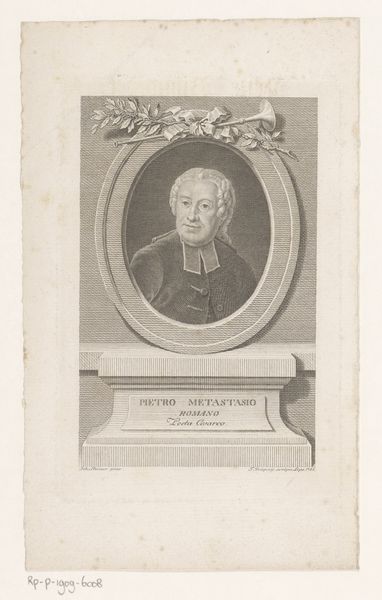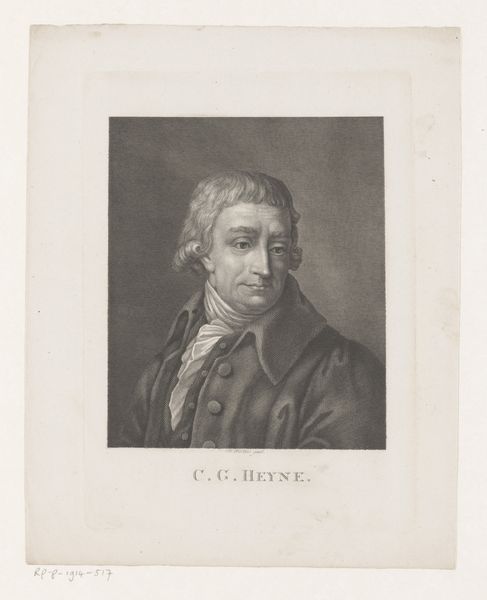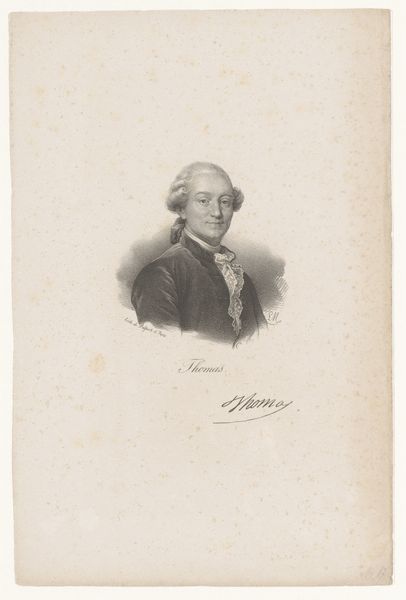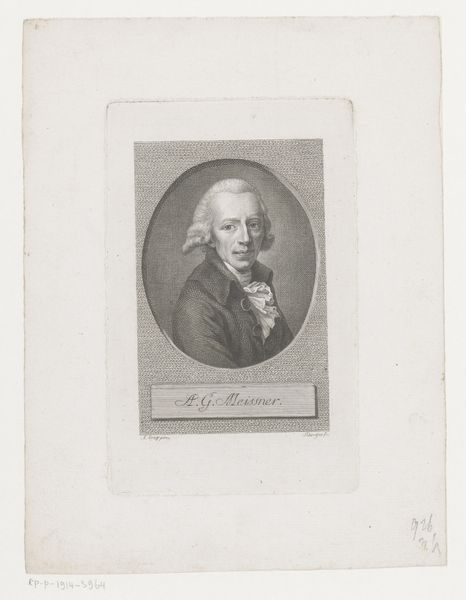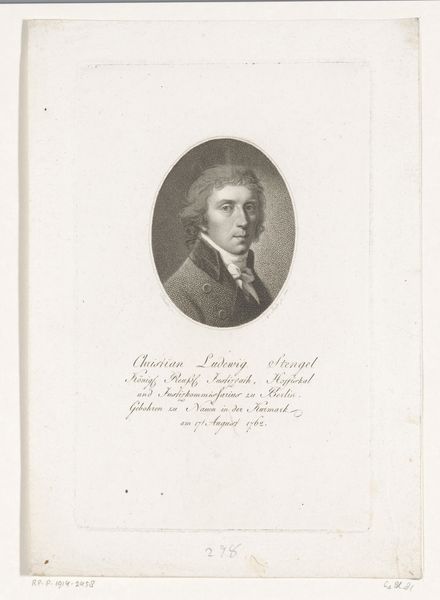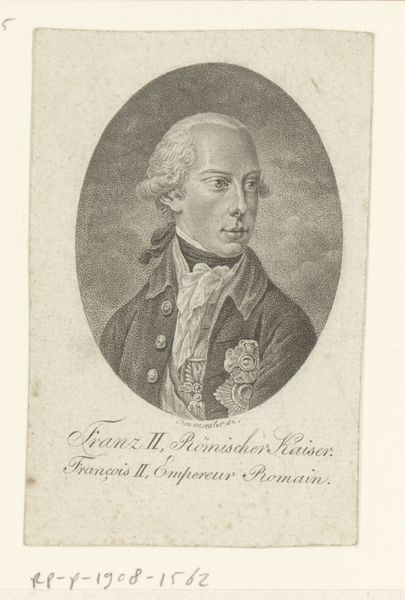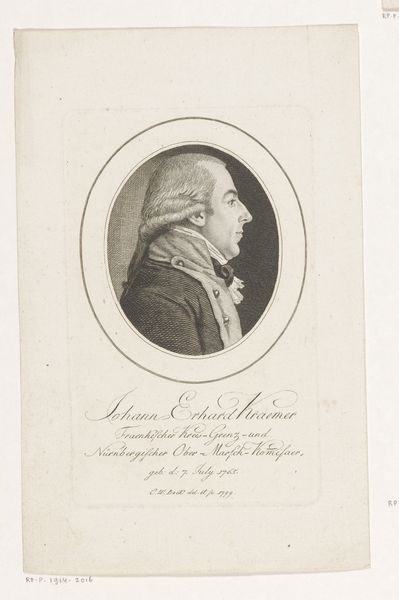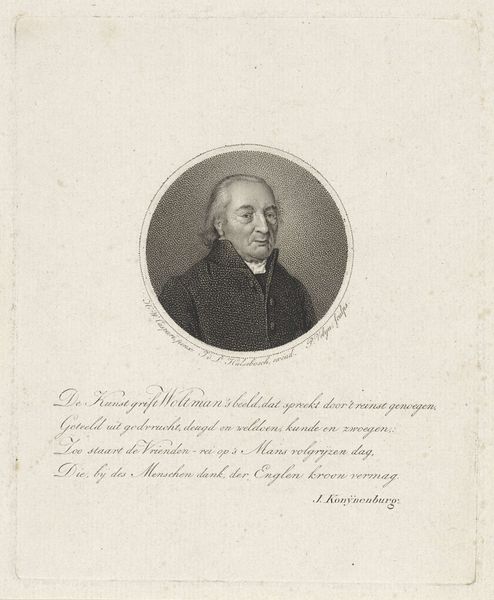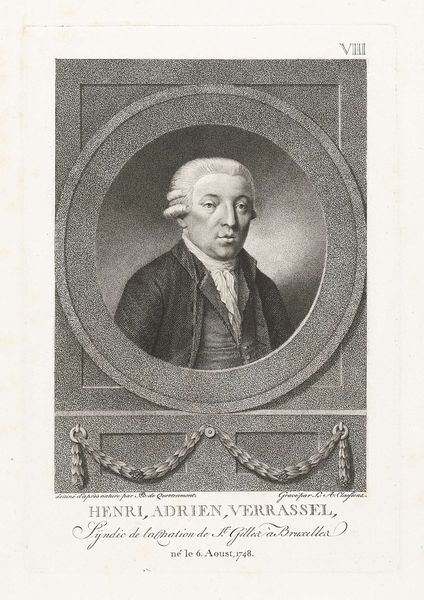
print, engraving
#
portrait
#
neoclacissism
# print
#
old engraving style
#
figuration
#
history-painting
#
engraving
Dimensions: height 143 mm, width 87 mm
Copyright: Rijks Museum: Open Domain
Curator: This print from 1801 presents a portrait of Friedrich Johann Lorenz Meyer. The old engraving style and portrait orientation reflect a very specific visual language to discuss political authority at the time. Editor: My first impression is this gentleman looks rather serious, though I wouldn’t quite call him severe. The neat, tidy hair, the somber coat—it all speaks to a very composed, self-aware persona. Like he knows his image matters. Curator: Absolutely. And image really was everything during the rise of the bourgeoisie. As a canon of Hamburg Cathedral, Meyer held a significant societal position, and this portrait reinforced that. We can tell he paid for this engraving and disseminated copies among friends, and collaborators. Editor: Right. Almost like an early form of... well, maybe not PR, but definitely self-promotion. I mean, look at the dedication printed beneath the portrait. Even the clean neoclassical border speaks of self control. But is it effective? There's a stiffness to it. It's hard to imagine him being jovial. Curator: Well, it’s not necessarily meant to be inviting, is it? Think about the tradition of history painting and state portraiture and how it shapes our understanding of historical figures. It presents power, not personality. It's really interesting how the artist of this engraving, Friedrich Wilhelm Bollinger, manipulates this tradition through printed formats. Engravings allowed a wider distribution and access to historical imagery and state symbols at a time of growing media landscapes. Editor: So the portrait works more as a signifier, a visual shorthand. But that makes me wonder—what did Meyer *really* care about? Was it faith, scholarship, the city of Hamburg, or merely climbing the social ladder? Did Bollinger try to include clues to Meyer’s ambitions? Curator: Those are great questions, and difficult to answer just from this image! But they also reveal so much about the kind of power the *image* holds – its capacity to both reveal and conceal, to invite speculation. Editor: Well, thanks for pulling me into Meyer’s orbit, it is worth thinking about how seemingly straightforward artworks still can harbor intriguing layers and unanswered riddles. Curator: Indeed! It just demonstrates how artistic prints are useful in shaping history writing and our image repertoire even to this day.
Comments
No comments
Be the first to comment and join the conversation on the ultimate creative platform.
